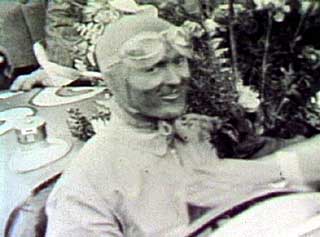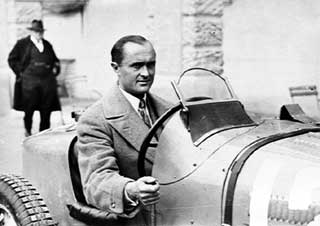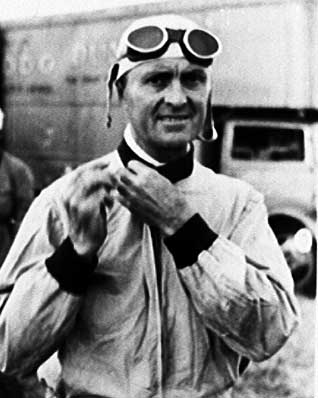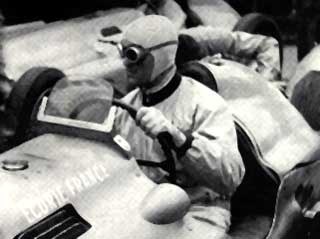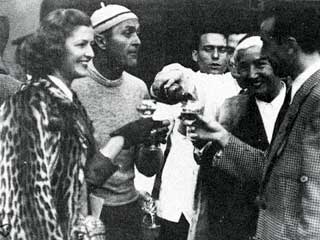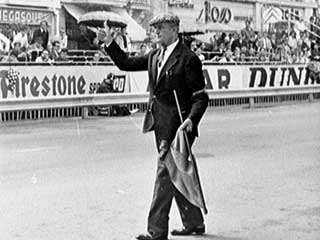 THE MONACO GRAND PRIX LIBRARY BY ROY HULSBERGEN THE MONACO GRAND PRIX LIBRARY BY ROY HULSBERGEN |
||||||||||||||||||||||||||||||||||||||||
|
Louis Chiron |
by Paul Frère | ||||||||||||||||||||||||||||||||||||||
| Tweet
|
||||||||||||||||||||||||||||||||||||||||
Born: August 3, 1899 - Monaco Grands Prix contested: 15 (1950 - 1955)
Louis Chiron‘s father came from a family of wine producers in the French Provence, but he could not resist the attraction of the luxury and the grand style of living in Monte Carlo, where he decided to settle down. He certainly did well, as he finished up as the “Maitre d’hôtel” of the Hotel de Paris, one of the most luxurious and refined hotels in the world. Young Louis was born in this aristocratic ambiance, and shyness was something unknown to him. Even though he worked in the hotel mostly as a groom, he soon felt quite at ease with the big shots of this world and he quickly learned the value of refinement, as well as languages and cooking. At the age of 16, he was already an accomplished driver and soon became the favourite chauffeur of the Prince’s family. Though, as a Monegasque, he had no obligation, he joined the French army as a volunteer when he was 18 and gained more driving experience chauffeuring high ranking generals, including Marshalls Foch and Petain. When the war came to an end, together with an English friend, Charles Grover-Williams, who later was to become a famous racing driver under the name of “Williams”, he founded a company to convert redundant military vehicles for civilian use. One day the supplies dried up, but thanks to his many relations, he made an arrangement with Bugatti to drive bare chassis from the Molsheim factory to the Côte d’Azur, where rich owners had them bodied by local coach-builders. Inevitably, in this ambiance, he was more and more attracted by car racing and in 1924 he bought his first Bugatti, a Brescia, which he ran mainly, and with great success, in hill climbs. Two years later, with the financial support of Alfred Hoffman, the Brescia had been exchanged for a modern type 35 and he won his first big race; the Grand Prix de Comminges, an important event at the time. But two more years went by before Ettore Bugatti took Chiron into his works team, which he promptly celebrated by winning the Spanish and the Italian Grand Prix, and repeated the Spanish victory in the following year. Many other victories of the Chiron-Bugatti association were to follow, both in “Grandes Epreuves” and in lesser events. Highlights were winning the Belgian Grand Prix of 1930 and his “home” Monaco Grand Prix as well as the French Grand Prix - a 10 hour race - co-driving with Achille Varzi in 1931. In 1932, he teamed up with his friend Caracciola to drive Monza Alfa Romeos, formed scuderia CC, but in Monaco Caracciola had a serious accident, which put him out for two seasons during which, except for the Spanish Grand Prix of 1933, Chiron scored only minor successes. In 1934, driving a Tipo B Alfa, he scored, what will probably be remembered as his biggest success, when he won the French Grand Prix at Montlhéry, defeating the might of the Mercedes and Auto-Union coalition. After that, little could be done about the German teams, heavily sponsored by the Nazi regime, so, in 1936, he joined Mercedes-Benz, which was an unlucky move because the cars were almost un-drivable. With the exception of the Monaco Grand Prix, won by Caracciola, the Auto-Union swept the board and for Chiron the 1936 season finished with an accident in which he had a narrow escape. Disgusted by the might of the Germans, the French turned to sports car racing in which Chiron drove Talbots, winning the Grand Prix de France (distinct and less important than the French Grand Prix) in 1937. In 1946, France’s first post war race saw him again at the wheel of a Talbot in the Grand Prix du Bois de Boulogne where he was beaten by Wimille’s Bugatti. However the following year, he again won the GP de France. Nearing 50, he had remained as enthusiastic as ever and occasionally drove a Maserati 4CLT where the Talbot had no chance, or a little 1500cc OSCA in sports car races. At age 55, he won the Monte Carlo Rally of 1954 in a Lancia, and a year later he drove a Lancia D50 into 6th place in his last race, his “home” Grand Prix de Monaco. Louis never lost his enormous enthusiasm and sense of humour. His idea of a retirement was to become Race director for the Monaco Grand Prix and to found the select Club International des Anciens Pilotes de Grands Prix F1, an event duly celebrated in Villars. Next to Prince Rainier, he was the most respected and most celebrated person in Monaco. But almost as much as 31 years of racing and winning, the triumph he scored in a highly popular quiz series on the Italian television, when he was questioned about cooking, contributed to his popularity: walking away with the jackpot, he had proved to be the worthy son of a Maître de Hôtel de Paris. by Paul Frère |
|
|||||||||||||||||||||||||||||||||||||||
|
||||||||||||||||||||||||||||||||||||||||

